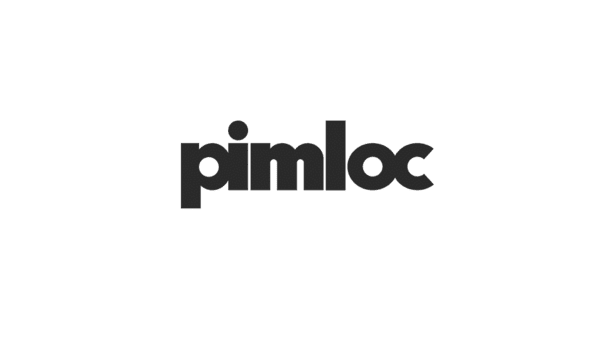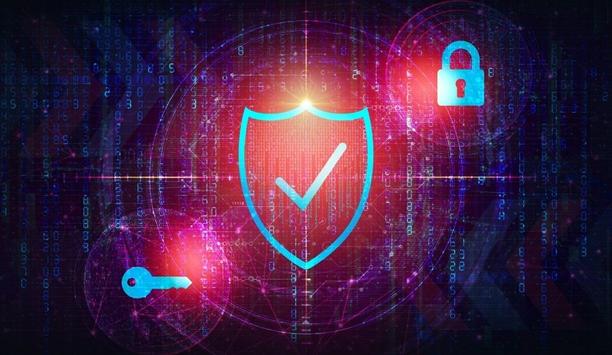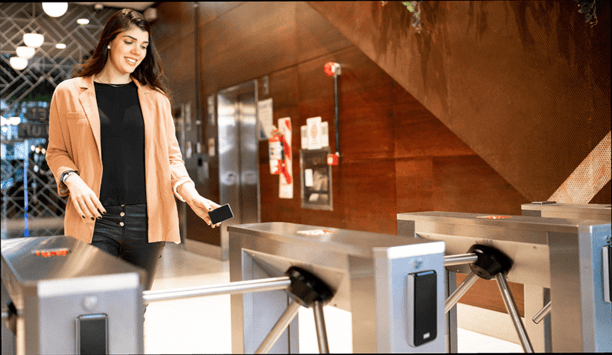Pimloc Limited - Experts & Thought Leaders
Latest Pimloc Limited news & announcements
Pimloc, a pioneering AI video privacy and analytics company, announced a major upgrade to its Secure Redact platform, introducing advanced Named Entity Recognition (NER) capabilities for automated audio redaction. This enhancement allows organisations to quickly and accurately detect and redact sensitive information from audio recordings, strengthening regulatory compliance and consumer trust. Latest AI-powered upgrade Secure Redact automatically identifies and categorises sensitive information such as names With this latest AI-powered upgrade, Secure Redact automatically identifies and categorises sensitive information such as names, locations, dates, and other personally identifiable information (PII) from audio, allowing users to quickly filter, review, and redact content in just a few clicks. "Audio redaction has long been a time-consuming challenge, but Secure Redact is now making it as seamless and effective as video redaction,” said Simon Randall, CEO of Pimloc. Expectations for data security Randall added: "With privacy regulations tightening and consumer expectations for data security rising, organisations need scalable solutions that don’t disrupt their operations." "This enhancement is a game-changer for industries handling large volumes of sensitive audio data, from recorded insurance claims to law enforcement body cam footage and beyond.” Secure Redact’s new NER capability Secure Redact’s new NER capability makes audio redaction faster and more precise by automatically surfacing key entities and allowing users to filter by category, review detected terms, and redact all instances instantly. Secure Redact’s new NER capability makes audio redaction faster and more precise by automatically This advancement is particularly valuable in industries where audio redaction has historically been a manual and time-consuming process. In insurance, Secure Redact can redact customer details in recorded claims and call centre interactions. For law enforcement and public safety agencies, it can ensure compliance in police body cam footage and emergency call recordings. In healthcare, it can safeguard patient confidentiality in medical recordings and telehealth consultations. Secure Redact for PII redaction "Organisations are handling more sensitive audio and video data than ever, and ensuring privacy compliance can be overwhelming," said Randall. "Our goal with Secure Redact is to provide an all-in-one solution for PII redaction, making it easy to automatically detect and remove sensitive information across both video and audio. This latest enhancement streamlines the process, helping organisations reduce risk and stay compliant – without adding complexity to their workflows.”
CCOM Global Technologies, experts in managing video surveillance on cruise liners is leveraging Pimloc’s Secure Redact privacy platform, the world’s pioneering automated video redaction AI software solution, to ensure the privacy of uninvolved individuals when disclosing footage to third parties or in response to subpoenas. The security challenges onboard cruise ships – effectively small towns with up to 5,000 ‘residents’ are huge, and Secure Redact has proven to be highly effective in maintaining passenger privacy during video surveillance. Automatic blurring Secure Redact’ automatically blurs personal and sensitive data in captured and live security videos. This enables organisations such as CCOM Global Technologies to quickly and responsibly handle footage from CCTV by protecting and redacting personal data, such as faces and automatically redacting and anonymising the information 200 times faster than traditional video editing services. Secure Redact platform The technology can be deployed selectively, removing some or all faces or other identifying information Pimloc has developed world-pioneering AI solutions, trained to perform on real-world security footage, through its Secure Redact platform to protect personal data in images and video automatically. The technology can be deployed selectively, removing some or all faces or other identifying information. As a result, video clips that have been selectively anonymised with Secure Redact can be supplied externally, while staying compliant with data privacy laws and regulations. Privacy, safety, and security “When we are looking at security challenges, we have thousands of people that we need to keep safe and secure, maintaining their well-being,” says Daniel Ginat, Director of Technology at CCOM Global Technologies. “It's a small town, or a Vegas scale of the hotel, with hundreds and hundreds of CCTV cameras. Privacy, as well as security, is key, and Secure Redact helps us to deal with security issues for our clients, while effectively keeping bystanders and other innocents out of the picture.” Advanced features After comparing other solutions, CCOM Global Technologies chose Pimloc’s Secure Redact privacy platform for its advanced features and fair pricing, making it the ideal choice. But it wasn't only the features and value that secured the contract with CCOM Global Technologies; communication was also key. “From the start, we felt like the team at Pimloc was very knowledgeable of the system,” Ginat adds. “They could show us exactly all of the features and how to use them. This level of expertise, combined with the platform's capabilities, made Secure Redact the clear choice for us to partner with.” Face detections Secure Redact creates the final redacted video for download by blurring all the detected personal data Secure Redact automatically processes and ingests any uploaded video from CCOM GlobalTechnologies’ CCTV footage onboard ship, before reformatting it and running machine learning algorithms over each frame to detect all faces. These detections are then marked for redaction as orange boxes on the video and are only viewable by CCOM Global Technologies operatives, who review the results before Secure Redact creates the final redacted video for download by blurring all the detected personal data, ready for export and delivery to their cruise liner client. Data privacy compliance requirements “We’re delighted to be helping CCOM Global Technologies to maintain privacy during cruise ship video surveillance,” says Pimloc CEO Simon Randall. “Secure Redact meets international data privacy compliance requirements when dealing with personal data in images and video files, and it is the fastest solution on the market. We’re enabling cruise liners to supply video clips externally to employees, customers, or even corporate insurance companies, law enforcement, and lawyers while staying compliant with data privacy laws and regulations.”
Pimloc a world-pioneering AI video privacy, redaction, and intelligence company announces a project pilot with Sussex Police and Microsoft. The collaboration helps to make multimedia redaction for subject access requests and digital evidence faster and more accurate through the implementation of cutting-edge artificial intelligence technologies, which marks the start of an exciting business development for Pimloc. Pimloc’s advanced AI Secure Redact is the ideal key for this union, as it provides Sussex Police with a scalable solution The project will leverage Pimloc’s advanced AI-based video redaction platform, Secure Redact, to provide Sussex Police with innovative tools for faster and more accurate redaction, supported by a private tenant deployment onto Microsoft’s robust cloud platform, Microsoft Azure Cloud. Secure Redact is the ideal solution for this collaboration, as it provides Sussex Police with a scalable, enterprise-grade solution for multi-modal needs. Pimloc’s cutting-edge technology Pimloc’s cutting-edge technology will be integrated into the police force’s existing infrastructure, enabling real-time anonymisation of video footage. This will significantly enhance the force’s ability to complete redaction quicker which means they can respond to DSARs (Data Subject Access Requests) more swiftly ensuring that individuals’ personal data is protected. Digital evidence Secure Redact helps the force meet its duties and manage risks from compliance Secure Redact will help the force meet its obligations and manage risks from compliance, oversight and data management. It supports police transparency, accountability and helps to improve subject and victim outcomes, as well as allowing more digital evidence and data to be processed and shared. Simon Randall, CEO of Pimloc commented, “We are proud to collaborate with Sussex Police and Microsoft to deliver solutions that make a real difference in public safety. Our technology is designed to empower policing to be able to share more data and evidence whilst protecting personal and sensitive information that it holds within. Facilitating more transparency, accountability and improving victim outcomes.” Digital infrastructure Sara Naylor, Head of Sussex Police’s Corporate Development Department, emphasised the transformative potential of this project. "This pilot has allowed us to empower our people with the service they require to carry out their policing duties." "This initial trial with Pimloc is a significant step towards modernising our digital infrastructure, enhancing our operational efficiency and time saving.” This pilot represents a new step in the use of AI for the police as part of law enforcement and community protection.
Insights & Opinions from thought leaders at Pimloc Limited
Six months can go by in the blink of an eye. In 2022, it almost seems as if it has. Here we are already at mid-year after what has been an eventful six months for the security marketplace. There is still a lot ahead in 2022 for the industry, and our Expert Panel Roundtable has been considering what the coming months might hold in terms of technology change. We asked this week’s panelists: What will likely be the most important technology development in the security marketplace in the second half of 2022?
The Metaverse sounds like the plot of the latest summer action movie. In reality, it’s a technology - or, more accurately, a group of technologies - that will likely have a transformational impact on a host of markets. For security, the Metaverse has an extensive list of needs. It also presents some opportunities. We asked this week’s Expert Panel Roundtable: What does the Metaverse mean for security?
In the UK there is a new data reform act working its way through the legislative process. As the law changes, the market changes – so this year will see many companies trying to read the tea leaves and adapt their offerings to take advantage of the emerging changes. The security marketplace is, apparently, constrained by the need for great privacy – it appears to be a zero-sum game – you can have privacy, or you can have security, you can’t have both. In the second half of the year, it is likely that more firms will require services which enable the use of video analytics to extract operational value from visual data, while using AI-powered tools to protect privacy as standard. Privacy-enhancing technologies One of the areas where there is a huge interest is among retailers, who use video cameras not only to reduce shrinkage and protect employees, but also for video analytics (to understand customer behaviour). Several other industries such as transport, retail, and healthcare have also had an increased rollout One area which is extremely interesting and very poorly understood is the extent to which these videos troves are protected under GDPR. The short answer is they are protected, and the second half of 2022 will see more retailers adopting privacy-enhancing technologies to allow them to open up their security footage to help optimise operations and marketing. There will undoubtedly be a rise in live video capture for safety and accountability. Seven US states now mandate body-worn cameras for police officers, and they are also common practice with UK police. Several other industries such as transport, retail, and healthcare have also had an increased rollout. CCTV camera operators In parallel, both public and private organisations are turning more towards video analytics, as they can be useful in many different contexts; they can help in saving time for CCTV camera operators, help efficiency in monitoring places for crime, and can be integrated into other systems – i.e., counting footfall at different locations – as well as use for smart parking, automatic licence plate recognition, and facial recognition. 2022 will bring further growth in consumers investing in personal video surveillance for their homes. With the pandemic having forced many to stay at home, home security has become more of a priority. Ring, which produces doorbell cameras, is increasingly popular: they are now the largest corporate-owned civilian-installed surveillance network in the U.S. Personal security cameras Countries like China have already incorporated heavy use of facial recognition technology Interestingly, some of the first GDPR cases and fines have arisen surrounding these cameras, with questions surrounding lawfully processing data and invasion of privacy. As a result, we could see more of a legal requirement for individuals to process footage from their personal security cameras in compliance with GDPR. While the privacy and human rights issues surrounding facial recognition remain heavily discussed, its use will become a lot more ubiquitous – but with concurrent pushes for regulation. Countries like China have already incorporated heavy use of facial recognition technology, and in the West, particularly in smart cities, it is being adopted in different areas; namely, in airports, retail stores, hospitals, and in the workplace, as well as verifying identities online. Trialling facial recognition The police in the UK have also been trialling facial recognition AI for ‘predictive policing’ to tackle crime and use these video analytics for intelligence gathering. In the second half of the year, the EU will reach resolution on its new AI Act that looks to ban facial recognition for a range of sectors. The EU will reach resolution on its new AI Act that looks to ban facial recognition for a range of sectors Companies’ attitudes toward privacy are shifting. Attitudes towards security methods for securing data are changing, with it no longer being a simple check-box exercise, but important for brand reputation and marketing purposes. Investing more money and effort into securing data privacy, as well as weighing out the benefits of data localisation, will become more commonplace for businesses when trying to keep customer data secure. Managing personal data Cyber-attack will continue to be one the largest risk for data management, alongside data misuse from employees. Recent statistics from CISCO have shown that over 50% of consumers would switch to companies they believe have better policies around the handling of data. Consumers are wanting greater trust and transparency from the businesses they engage with, leading to companies changing the way that their internal and external practices deal with and manage personal data. Privacy is no longer about compliance and more to do with business reputation and trust – and customers and employees are becoming more cognisant of this. The author of this article is Simon Randall, CEO of Pimloc, the video privacy, and security company.
Using artificial intelligence (AI) to automate physical security systems
DownloadA modern guide to data loss prevention
Download7 proven solutions for law enforcement key control and asset management
DownloadThe truth behind 9 mobile access myths
DownloadAccess control system planning phase 2
Download













